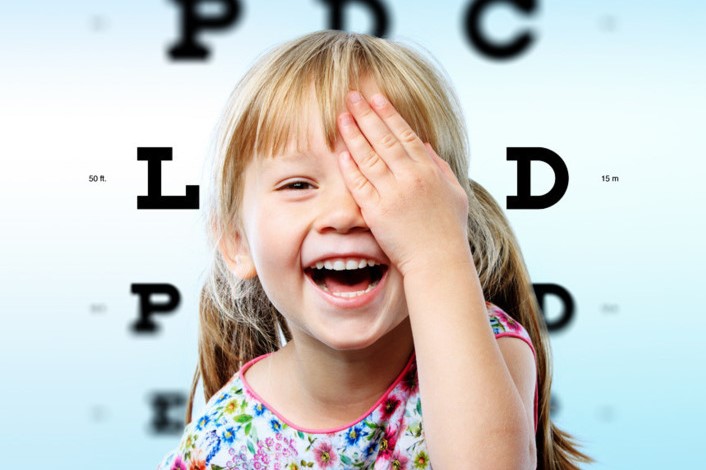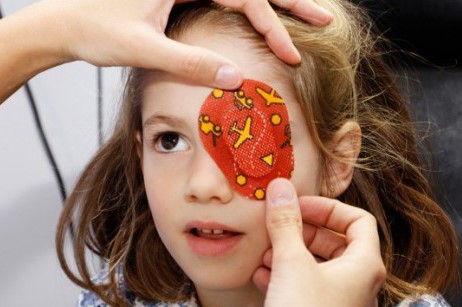
Amblyopia and strabismus: what they are and how they affect a child's life
Amblyopia and strabismus are visual impairments that occur in early childhood and can compromise visual function
Eye development in children: amblyopia and strabismus
The development of vision in children is a complex process, which cannot be related to the simple growth in size of the eye and its connections with the brain.
Vision is not simply visual perception, but involves the cooperation of highly articulated brain structures to interpret what the eye ‘sees’.
Visual function can be compared to an electrical system, consisting of a transducer, a message transmission system and a reception and processing system.
The transducer, i.e. the eye, has the function of:
- capture images
- regulating the intensity of light to be sent to the retina;
- focusing the images on the retina.
This is where light stimuli are translated into electrical impulses.
The optical pathways transport the visual impulses to the brain, where they are not passively received, but undergo a complex process of processing, integration and interpretation.
If there is an impediment in this system, vision cannot develop in the child.
Amblyopia
Amblyopia is a visual impairment that is not caused by an eye disease, but by a blurring of the images that reach the retina, so that the brain cannot interpret them correctly.
As a result, the child is unable to fully develop the ability to see.
An amblyopic eye, although basically healthy, is not able to see well.
The main causes that prevent images from coming into focus on the retina are visual defects (ametropia) and visual deprivation (strabismus, ptosis, opacity of the crystalline lens or cornea).
Therapy for amblyopia
It consists of removing the cause of blurred vision by prescribing glasses and bandaging the better eye, so as to stimulate and obtain good vision from the eye that sees less.
This treatment is exhausting for the child.
The earlier action is taken, the quicker and more complete the visual recovery will be. The occlusion may be shorter (a few weeks) if the child is small.
After the age of 5 the results will be obtained more laboriously with many months of occlusion, while after the age of 6-8 the eye will remain low vision (amblyopic).
CHILD HEALTH: LEARN MORE ABOUT MEDICHILD BY VISITING THE BOOTH AT EMERGENCY EXPO
Why is it important to have an eye examination before the age of 6?
It is extremely important for children to have an eye examination to ensure that there is no cause for amblyopia.
The age at which vision develops varies from case to case, but it is generally necessary to take action by the age of 6.
After this period, vision will remain impaired.
To give an idea of the scale of the phenomenon, for every 50 people there is one amblyopic person.
With neuronal stimulation it is possible to recover sight.
It is known that we normally only use a small part of the neuronal connections in our brain.
Thanks to new methods of stimulation and neurovisual input (Gabor Patch), it is now possible to increase and improve the visual quality of the eye even in adulthood, using the enhancement of the brain’s neuronal interconnections.
The price is regular training over several months, with results that seem to be maintained over the years.
It sounds like science fiction, but it works.
Strabismus
This is the misalignment of the visual axes on the fixed object to form an angle between them, called the angle of deviation.
This angle in infantile strabismus is often the same in all directions of gaze: we therefore speak of concomitant strabismus.
What are the consequences?
Strabismus produces different images on the retina of the two eyes, leading to confusion or splitting of images (diplopia).
To avoid this annoying phenomenon, the child, unlike an adult, has the ability to exclude (suppress) one of the two images.
By using one eye, the child sees better but loses the sense of depth forever (stereoscopic vision).
What are the types of strabismus
A squint can be always present, be intermittent, or occur only during near vision.
Its onset can be at birth or later, around the age of 3, or even later.
For example, it may appear suddenly after a strong fever.
Strabismus can be
- vertical;
- most commonly horizontal;
- convergent or exotropia: eyes inwards;
- divergent or exotropia: eyes outwards.
Read Also:
Emergency Live Even More…Live: Download The New Free App Of Your Newspaper For IOS And Android
Blepharoptosis: Getting To Know Eyelid Drooping
Lazy Eye: How To Recognise And Treat Amblyopia?



